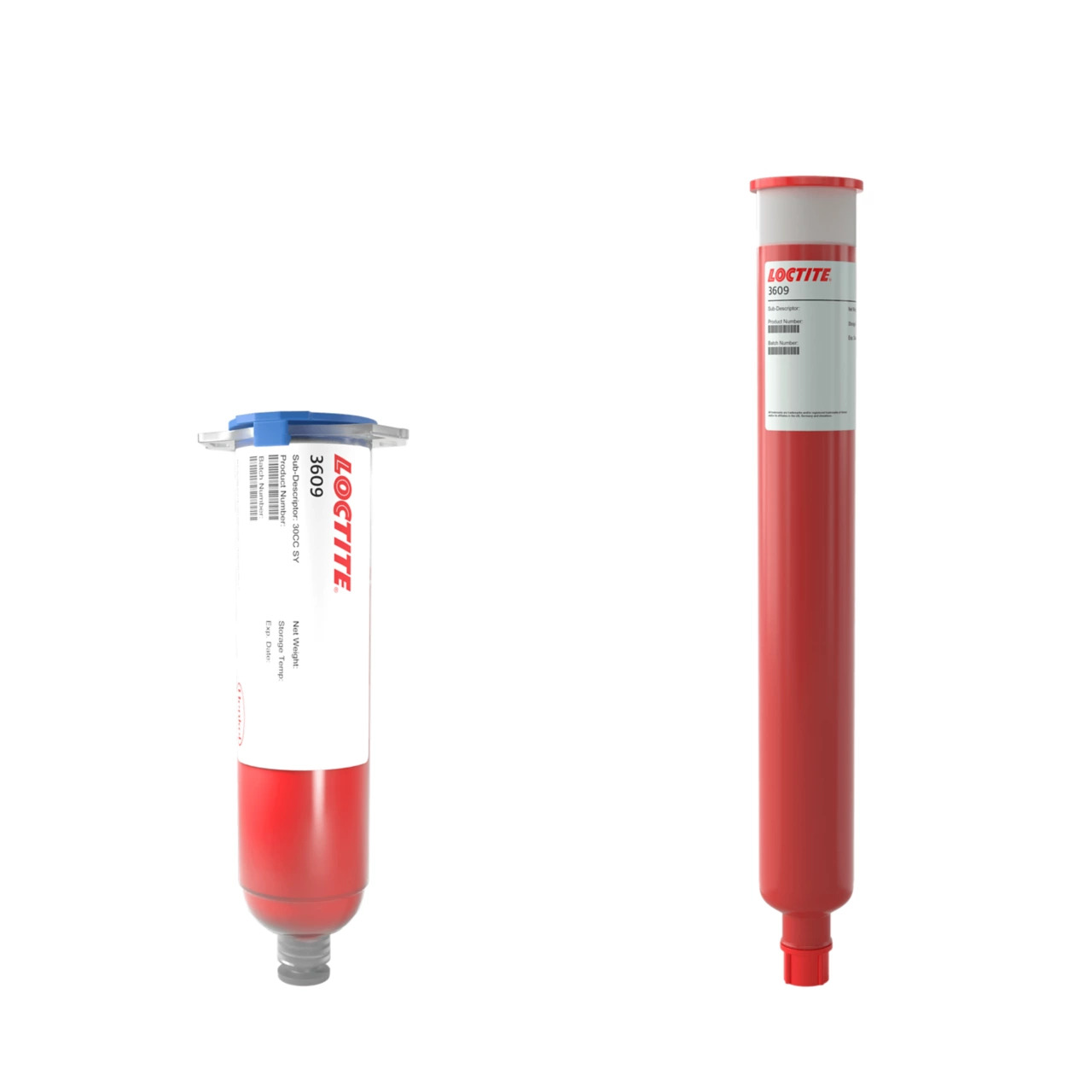LOCTITE 3609
- Heat Cure
- One component
- Small SMD bonding
Product Description
LOCTITE 3609 is a dark red, viscous epoxy gel designed for bonding surface mounted devices to printed circuit boards prior to wave soldering. It is particularly suitable for applications where medium to high dispense speeds, high dot profile, high wet strength and good electrical characteristics are required. Particularly suitable for applications where medium to high dispense speeds, high dot profile, high wet strength and good electrical characteristics are required.
LOCTITE 3609 has been used successfully in lead free processes with water and alcohol based fluxes under conditions outlined in the Environmental Resistance section. It is designed for bonding surface mounted devices to printed circuit boards prior to wave soldering. This surface mount adhesive is used for small part bonding with a medium dispense speed of around 15,000-25,000 dots/h.
Recommended Cure:
- 90-120 seconds @ 150 °C
Technical Specifications
| Electrical Properties | |||||
| Volume Resistivity Volume Resistivity Volume resistivity, also called volume resistance, bulk resistance or bulk resistivity is a thickness dependent measurement of the resistivity of a material perpendicular to the plane of the surface. | 2.0x1015 Ohms⋅cm | ||||
| General Properties | |||||
| Density (g) | 1.4 g/cm3 | ||||
| Specific Gravity Specific Gravity Specific gravity (SG) is the ratio of the density of a substance to the density of a reference substance; equivalently, it is the ratio of the mass of a substance to the mass of a reference substance for the same given volume. For liquids, the reference substance is almost always water (1), while for gases, it is air (1.18) at room temperature. Specific gravity is unitless. | 1.2 | ||||
| Thermal Properties | |||||
| Glass Transition Temperature (Tg) Glass Transition Temperature (Tg) The glass transition temperature for organic adhesives is a temperature region where the polymers change from glassy and brittle to soft and rubbery. Increasing the temperature further continues the softening process as the viscosity drops too. Temperatures between the glass transition temperature and below the decomposition point of the adhesive are the best region for bonding. The glass-transition temperature Tg of a material characterizes the range of temperatures over which this glass transition occurs. | 73 °C | ||||
| Specific Heat Capacity Specific Heat Capacity Specific heat capacity is the amount of heat energy required to raise the temperature of a substance per unit of mass. The specific heat capacity of a material is a physical property. It is also an example of an extensive property since its value is proportional to the size of the system being examined. | 0.3 J/(g⋅°C) | ||||
| Thermal Conductivity Thermal Conductivity Thermal conductivity describes the ability of a material to conduct heat. It is required by power packages in order to dissipate heat and maintain stable electrical performance. Thermal conductivity units are [W/(m K)] in the SI system and [Btu/(hr ft °F)] in the Imperial system. | 0.4 W/m.K | ||||
| |||||




